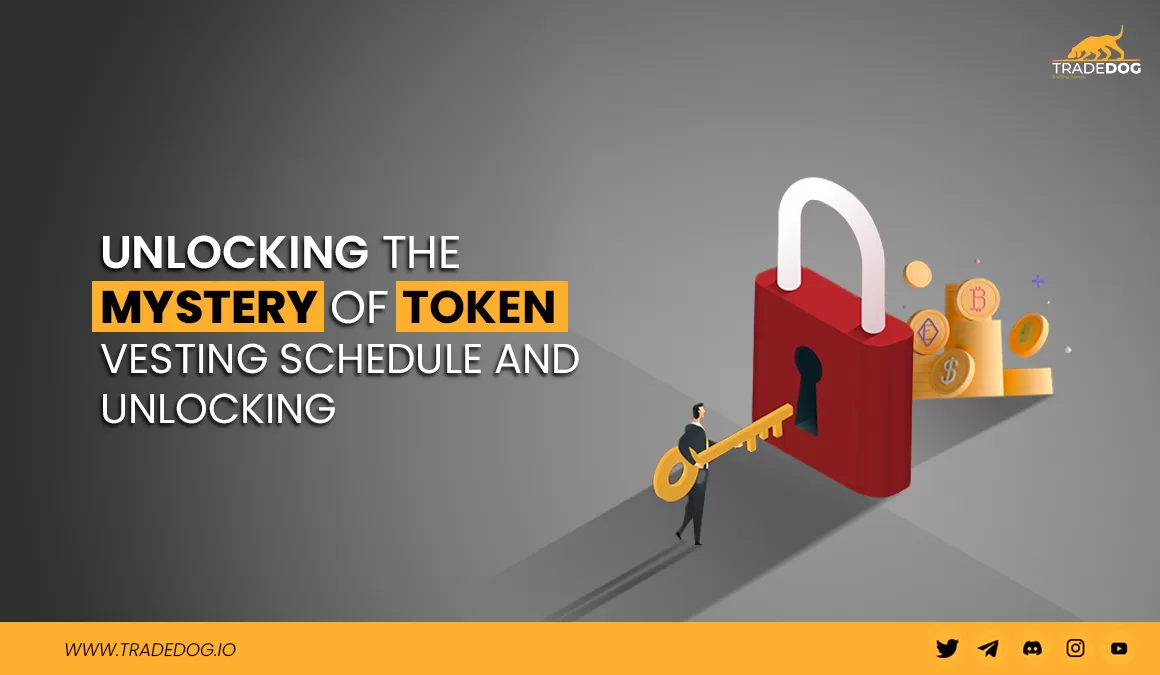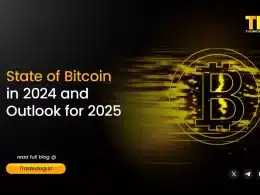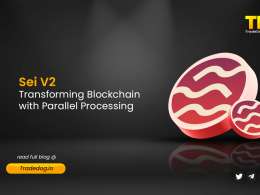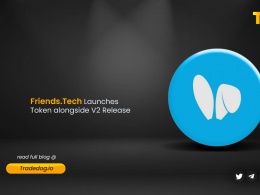Quick Links
In the world of cryptocurrency, token unlock is a term that is commonly used to describe the release of tokens into circulation after a certain period of time. This process is usually a part of the initial coin offering (ICO) or token sale, where tokens are sold to investors in exchange for cryptocurrency or fiat currency. In this blog, we will explore what token unlock is, what token unlock schedules are, how to understand vesting schedules, and the impact of token unlock on token price.
What is Token Unlock?
Token unlock is the release of tokens into circulation after a certain period of time has passed. This process is usually a part of an ICO or token sale, where tokens are sold to investors in exchange for cryptocurrency or fiat currency. The tokens are held by the company or organization that issued them until the predetermined lock-up period has expired. Once this happens, the tokens are unlocked and released into circulation, where they can be bought, sold, and traded freely on the open market.
Token Unlock Schedule
A token unlock schedule is a predetermined plan for the release of tokens into circulation. This plan outlines the lock-up period, which is the amount of time that the tokens are held by the company or organization before they are released. The lock-up period can range from a few months to several years, depending on the terms of the ICO or token sale.
Vesting Schedule
A vesting schedule is a specific type of token unlock schedule that outlines the release of tokens over a period of time. This schedule is often used when tokens are issued to company employees, advisors, or founders. The tokens are released in predetermined intervals, such as every month or every quarter until the entire allocation has been unlocked.
Understanding vesting schedules can be complicated, as they can involve multiple tiers of unlocking, different vesting periods, and varying release schedules. It is important for investors to carefully review the vesting schedule and understand how it may impact the token price over time.
Impact of Token Unlock on Token Price
The release of tokens into circulation can have a significant impact on the token price. When a large number of tokens are unlocked at once, it can flood the market and create an oversupply, leading to a drop in price. On the other hand, a slow and steady release of tokens can help maintain a stable price and prevent sudden drops in value.
Recent Impact of token unlocks on the prices
BitDAO is a decentralized autonomous organization that supports DeFi projects through research and development, token swaps, and grants.
On January 15, 2023, BitDAO distributed around 188 million BIT ($53 million), or nearly 10 times the token’s market volume, which caused a drop in the value of the price as evident from the graph.
2 billion BIT tokens were also made available through BitDAO smart contracts in July 2021, pushing up the price to $1.72 before dropping about 22% on September 8, 2022. Once the estimated 267 million BIT were released on September 15, 2022, the price fell by 11%.
ApeCoin (APE) is a token intended to support the development of one of the most famous and valuable NFT collections: the Bored Ape Yacht Club. In order to facilitate the Web3 and metaverse development of Yuga Labs, APE holders have governance rights in the ApeCoin DAO. Yuga Labs distributed 150,000 APE to owners of the Bored and Mutant Ape Yacht Club NFTs initially, then on January 17, 2023, it released 7.3 million ($26 million) APE for the ApeCoin DAO treasury. On March 17, 2023, smart contracts will also discharge around 33 million APE ($105 million).
A sudden drop in the price of the token was seen during the time but right after, a sudden upward trend was observed possibly due to improvements and developments.
What Should Investors see in a vesting schedule?
Investors should carefully consider the token unlock schedule and how it may impact the token price over time. It is also important to research the company or organization issuing the tokens and their long-term plans for the token’s use and adoption. A vesting schedule for a token refers to the process by which tokens become fully accessible to the investor or token holder. Typically, tokens are subject to a vesting schedule to incentivize long-term commitment and alignment between the investor and the project’s goals.
Understanding the vesting schedule of a token is essential for an investor, as it can impact the investor’s liquidity, voting rights, and overall investment strategy. Here are some key considerations for understanding the vesting schedule of a token:
Time-based vesting: The most common form of token vesting is time-based, where tokens are released gradually over a specific period. For example, an investor may receive 25% of the tokens upfront and the remaining 75% over three years. Investors should be aware of the timeline of the vesting schedule and the percentage of tokens that are released at each interval.
Performance-based vesting: Another form of token vesting is performance-based, where the release of tokens is tied to specific milestones or goals. For example, tokens may be released when a project achieves a certain level of adoption or revenue. Investors should understand the performance metrics that trigger the release of tokens and evaluate the likelihood of those metrics being met.
Cliff period: Many vesting schedules include a cliff period, which is a period of time during which no tokens are released. This is typically used to ensure that investors remain committed to the project over the long term. Investors should be aware of the length of the cliff period and how it impacts their liquidity.
Lock-up period: In addition to the vesting schedule, some tokens may have a lock-up period during which the investor cannot sell or transfer the tokens. Investors should understand the length of the lock-up period and evaluate how it fits into their investment strategy.
Tokenomics: Finally, investors should evaluate the overall tokenomics of the project, including the total supply of tokens, the distribution of tokens, and the use case for the tokens. Understanding these factors can help investors make informed decisions about the value of the tokens and the potential for price appreciation.
Overall, understanding the vesting schedule of a token is critical for investors who want to make informed decisions about their investments. Investors should carefully evaluate the timeline, performance metrics, cliff period, lock-up period, and tokenomics to determine the potential value and risks associated with the token.
Upcoming token releases
As of 3rd March 2023, multiple projects are planning to unlock their tokens this month which include Near, WRX, RLY, and DAR as of the same day of writing totalling almost 201 Mn of their native tokens.
Moonbeam (GLMR), Aptos (APT), Sweat Economy(SWEAT), dYdX (DYDX), and BitDAO (BIT) scheduled their unlocks for March 11, 12, 13, 14, and 15, respectively. GLMR will release $89,100 worth of tokens every day until the total reaches $4.27 million. SWEAT will also go under a cliff unlock by releasing a total of $3.82 million by unlocking $72,900 daily.
APT, DYDX, and BIT will each release $54.8, $17.1, and $100.9 million, respectively. The third-largest unlock of the month will be made by BitDAO, which will release over 187 million BIT tokens worth $109,882,313.
Stargate Finance (STG) and ApeCoin (APE) set their unlocks for March 17. The second-largest unlock of the month, ApeCoin will release $205 million worth of tokens. STG, on the other hand, will undergo a linear unlock phase during which $576,923 will be released every day.
Last but not least, on March 24, March 25, and March 27, respectively, LooksRare (LOOKS), Immutable X (IMX), and Yield Guild Games (YGG) will unlock tokens valued at $2.3 million, $19.2 million, and $5.2 million.
Conclusion
In conclusion, token unlock is a process that is commonly used in the cryptocurrency world to release tokens into circulation after a predetermined lock-up period has expired. Token unlock schedules, including vesting schedules, are used to plan the release of tokens over time. Understanding these schedules and their potential impact on the token price is important for investors looking to make informed decisions. An early investor can explore these vesting schedules from the data available on the web to make informed decisions and invest their money wisely.









